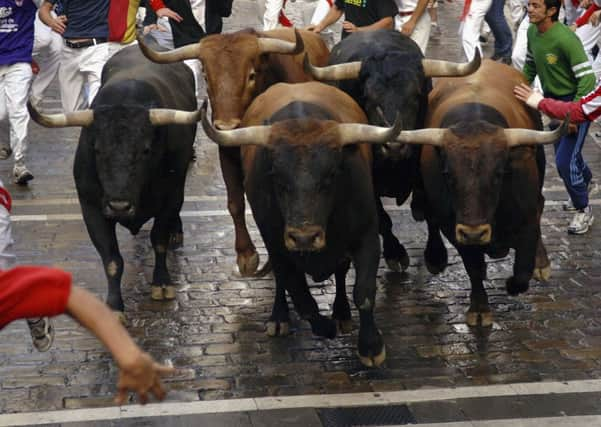George Kerevan: Markets gripped by Pamplona fever


A Pamplona-like mixture of bravado and risk-taking seems to have gripped the world’s equity markets this week, led by Wall Street.
MSCI’s All World share index, which tracks 45 countries, hit an all-time high, boosted by forecast-busting US employment figures and renewed assurances from the European Central Bank that cheap money is here to stay.
Advertisement
Hide AdAdvertisement
Hide AdUS markets were on Fourth of July holiday yesterday, which may have made some investors demob happy during the week. The Dow Jones industrial average passed the 17,000 milestone for the first time while the broader S&P 500 rose to within 1 per cent of the psychological 2,000 barrier.
Even more telling, the Nasdaq index closed at its highest since the dot-com meltdown in 2000. High tech is back.
It’s not just the record highs, it’s the trading gains. The Dow rose 1.3 per cent on the week, the S&P 500 was up 1.25 per cent, while the Nasdaq climbed a whole 2 per cent. In fact, the Nasdaq is up 10 per cent since the start of May, proving the markets are running extra fast to keep ahead of those horns. So much for the old mantra of “sell in May”.
Time for a reality check: the Independence Day holiday obviously shortened the US trading week, so trading volumes were nearly a half of normal. Add in those good job numbers and you were bound to see euphoria.
Foreign bourses caught the excitement. It’s Pamplona with equities. Question: when is someone going to get hurt?
As I’ve said before, this bull run hinges on the willingness of central banks to direct easy money into equity markets, and on the willingness of investors to believe the word of central bankers.
Black swan events apart (e.g. a Saudi-Iran clash), the bulls could keep running till the US presidential election in November 2016.
Who needs a hedge fund manager anyway?
One group suffering collateral reputation damage from the long bull run are hedge funds, which manage around £1.6 trillion globally.
Advertisement
Hide AdAdvertisement
Hide AdBy definition, hedge funds lay off against market volatility. But volatility is now as scarce as hen’s teeth. As a result, hedge funds have become – in the jargon – highly correlated with the equity market. So who needs hedge funds?
Consider: the cumulative annualised growth rate for the S&P 500 is 16 per cent for the last three calendar years. If you had invested some $1m in the market at the start of 2010, you would have doubled your money by the end of last year. Why pay a hedge fund manager the standard 2 per cent of assets plus 20 per cent performance fee when you can just sit back and watch the S&P soar?
And what happens if interest rates do go up unexpectedly?
The last time hedge funds were so positively correlated with the stock market index was just before the 2008 banking crash.
Most hedge funds not only failed to see what was coming – they made huge losses. Ouch!
SEE ALSO: